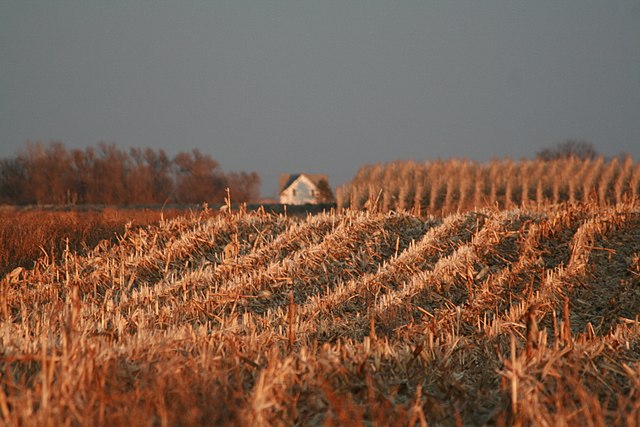In the heartland of America, the farming community of South Dakota stands on the precipice of economic uncertainty. With President Donald Trump‘s looming tariffs on longtime trade allies Mexico and Canada, the risks are apparent for this state, whose agricultural sector is deeply intertwined with both nations. South Dakota’s ties to Mexico and Canada are robust, with over 75% of its agricultural exports destined for these countries, a figure that underlines the critical nature of these relationships.
This potential trade conflict has sparked a wave of anxiety among South Dakota farmers. Historically, the state’s agricultural economy has not been spared from global trade tensions. In 2018, the imposition of tariffs by China on U.S. soybeans, a direct response to President Trump’s initial round of tariffs, hit hard, with South Dakota taking a significant economic blow. Doug Sombke, the president of South Dakota Farmer’s Union, voiced deep concerns. His sentiments reflect a larger apprehension sweeping through the community about increased operational costs and reduced access to lucrative markets.

Scott VanderWal
“This is not a good deal, either one. And they’re allies of ours on top of it. This is not good for South Dakota farmers and ranchers. It’s gonna cost us more from the aspect of parts for our machinery for our equipment and also any other imports like fertilizer and fuel,” Sombke said. “And on the other side, Canada and Mexico are going to impose tariffs on us and exports that we still do sell them. I mean this is just not a good deal for agriculture in any shape of the imagination.”
In this climate of apprehension, the only glimmer of support came in 2018 when federal government payments were provided to counteract losses from the trade skirmishes. However, these payments came at a cost, inflating the federal spending deficit and leaving many to question the long-term economic strategy in play.

Scott VanderWal
Scott VanderWal, the president of the South Dakota Farm Bureau, offered a slightly more optimistic perspective. His cautious hope hinges on diplomatic efforts and a call for strategically deployed tariffs. “It creates jitters in the market, and especially for ag commodity markets because that’s where the retaliatory tariffs can show up. And I understand the president got both Mexico and Canada to agree to put 10,000 troops on the borders in an effort to clean up the drug problems that are coming across the border, which is good, that’s good,” he noted. “We just urge him to keep in mind that there are possible negative effects of things like that. Sometimes, you like to keep tariffs in your back pocket for a last resort.”
Yet, caution pervades as the potential for an all-out trade war looms. VanderWal warns that such an outcome could drown the agricultural sector in unmanageable obstacles, exacerbating an already challenging economic environment. The prospect of new tariffs revives memories of previous struggles and federal assistance, alongside a fervent hope for more stable economic policies going forward.
South Dakota is a state of vast landscapes and resilient people—farmers who daily navigate the pressures of an international market. As conversations around tariffs evolve, the people of South Dakota watch closely, aware that their livelihoods are closely tied to the ebb and flow of global trade. Despite the distance from Washington’s corridors of power, their voices ring out loudly, calling for strategic and thoughtful economic policies that support rural America.
In the coming weeks, all eyes will be on policy outcomes and the delicate dance of international negotiations that will shape the destiny of South Dakota’s farmers. As agriculture remains a cornerstone of its economy, the state stands united, hoping for resolutions that uphold their hard-earned and treasured economic stability.
Email Doug Sombke at [email protected] or Scott VanderWal at [email protected] for more insights on the impact of these proposed tariffs.
